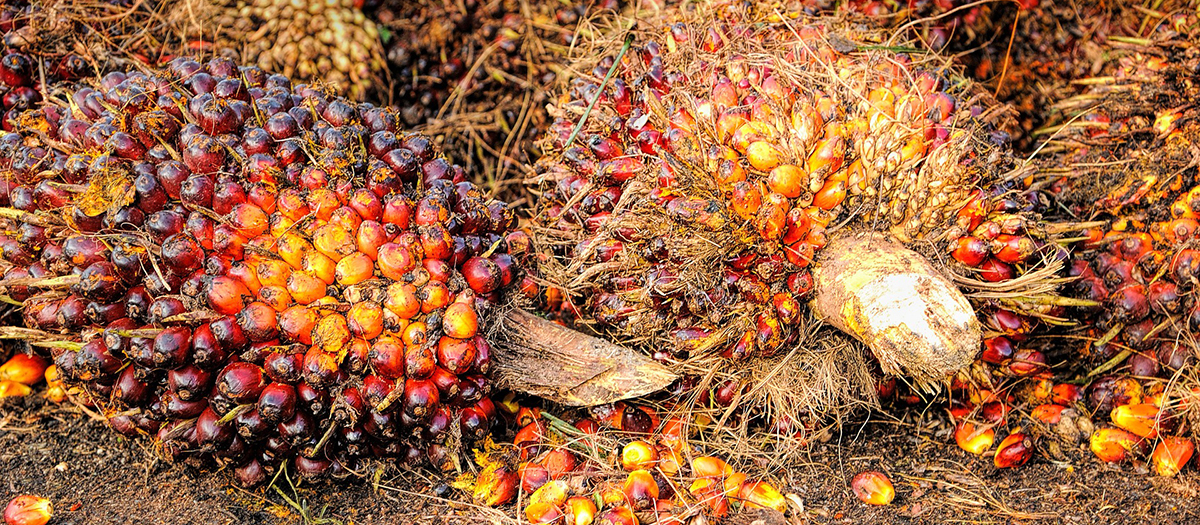This is a term you will see on the ingredients list of numerous products ranging from margarine and shortening to chocolate bars. I’ve been repeatedly asked about the presence of modified palm oil in Nutella, the popular chocolate hazelnut spread. Let’s squash one misconception right away. There is no genetic modification involved here, rather the term refers to altering the molecular structure of the naturally occurring fats in palm oil to produce fats with the desired melting point, consistency and mouthfeel.
First, we need to tackle a bit of chemistry and then a touch of history. A comb with three teeth serves as an analogy for the molecular structure of fats. The teeth represent fatty acids that are attached to a backbone of three carbon atoms, which is a molecule called glycerol. (In chemical parlance this “comb” is a “triglyceride”.) The fatty acids can be “saturated,” meaning that they are composed of a chain of carbon atoms linked by single bonds, “monounsaturated,” in which there is one double bond in the chain or “polyunsaturated” in which multiple double bonds are present. In each case, the number of carbon atoms in the chain can also vary.
Now for the history. When saturated fats, such as those found in butter and shortening, were first linked with cardiovascular disease back in the 1950s, the food industry took steps to give consumers a means to reduce their intake. An obvious approach was to replace some of the animal-derived saturated fats with vegetable fats that were mostly unsaturated and were deemed to be heart-healthy. The problem, though, was that these fats were too “liquidy” for most applications. However, “partial hydrogenation,” achieved by passing hydrogen gas into the vegetable oils, converted some of the unsaturated fats into the saturated variety and produced a consistency and mouthfeel similar to butter. A problem, only recognized later, was that hydrogenation also produced some “trans fats” as a side product. When these were linked to heart disease, the industry geared up to find a way to produce vegetable fats with the desired consistency without resorting to hydrogenation. Another way to “modify” the vegetable oils had to be found.
Palm oil is the most widely produced vegetable oil in the world, derived from the fruit of the oil palm, distinct from palm kernel oil which is extracted from the fruit’s kernel. Palm kernel oil is composed of roughly 80% saturated fats, while palm oil is composed of 50% saturates, 40% monounsaturates and 10% polyunsaturates. It is the high unsaturated content of palm oil that is responsible for its low melting point and fluidity.
The challenge then was to replace one or two of the polyunsaturated “teeth” in the “comb” with saturated fatty acids. The basic idea was to first dissociate the fatty acids from the glycerol backbone and then allow them to recombine with the glycerol in a process known as “interesterification” hoping that the recombination would result is a formation of novel “combs,” including some in which the middle “tooth” is the monounsaturated oleic acid, and the other two “teeth” are saturated palmitic or stearic acids. Such an arrangement was expected to have the right consistency for food applications. Enzymes (lipases) can catalyze both the disassociation and recombination reactions, as can some simple chemicals such as sodium methoxide. Indeed, some of the desired product was formed and various “fractionating” methods were developed to separate out this desirable component. Presto, food chemists had produced “modified palm oil” that was capable of replacing partially hydrogenated fats.
Of course, this modified oil still contains some saturated fatty acids, but less than butter. In any case, current scientific opinion is that saturated fats are not quite as villainous as once believed. When it comes to Nutella, I’d be more concerned about the sugar content (58%) than the inclusion of modified palm oil.







